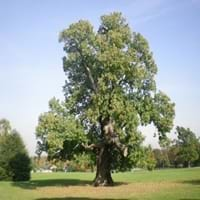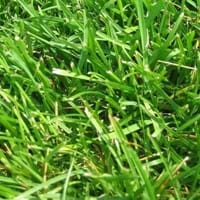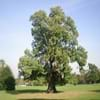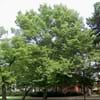Life Span
Perennial
Perennial
Origin
China, Korea
South America
Types
Not Available
Pensacola, Argentine, Tifton 9
Habitat
disturbed sites, Forest edges
Wild
USDA Hardiness Zone
4-8
8-11
Sunset Zone
2a, 2b, 3a, 3b, 4, 5, 6, 7, 8, 9, 14, 15, 16, 17
Not Available
Habit
Spreading
Mat-forming
Minimum Width
Not Available
Flower Color
White, Light Yellow, Ivory
Not Available
Flower Color Modifier
Bicolor
Bicolor
Fruit Color
Light Green, Chartreuse
Not Available
Leaf Color in Spring
Green, Gray Green
Green
Leaf Color in Summer
Gray Green, Dark Green
Light Green
Leaf Color in Fall
Yellow, Gold, Tan
Green
Leaf Color in Winter
Not Available
Green
Leaf Shape
Lobed
Needle like
Plant Season
Spring, Summer, Fall
Spring, Summer, Fall, Winter
Sunlight
Full Sun
Full Sun
Type of Soil
Clay, Loam
Clay, Loam, Sand
The pH of Soil
Acidic, Neutral
Neutral, Alkaline
Soil Drainage
Well drained
Well drained
Bloom Time
Late Spring, Early Summer
Spring, Late Spring, Early Summer, Summer, Late Summer, Early Fall, Fall
Tolerances
Drought
Not Available
Where to Plant?
Ground
Ground
How to Plant?
Seedlings, Stem Planting
Seedlings
Plant Maintenance
Low
Medium
Watering Requirements
Do Not over Water, Medium, Requires watering in the growing season
Does not require lot of watering
In Summer
Adequately
Lots of watering
In Spring
Moderate
Moderate
In Winter
Average Water
Average Water
Soil pH
Acidic, Neutral
Neutral, Alkaline
Soil Type
Clay, Loam
Clay, Loam, Sand
Soil Drainage Capacity
Well drained
Well drained
Sun Exposure
Full Sun
Full Sun
Pruning
Prune in fall, Remove damaged leaves, Remove dead branches, Remove dead leaves
Proper mowing practices are necessary
Fertilizers
Nitrogen, Potassium
All-Purpose Liquid Fertilizer
Pests and Diseases
Beetles, Leafhoppers
Red blotch
Plant Tolerance
Drought
Drought
Flower Petal Number
Not Available
Single
Foliage Texture
Coarse
Coarse
Foliage Sheen
Glossy
Glossy
Attracts
Not Available
Not Available
Allergy
Mild Allergen
allergic conjunctivitis, Asthma
Aesthetic Uses
Not Used For Aesthetic Purpose
Ground Cover
Beauty Benefits
Not Available
Not Available
Environmental Uses
Air purification, Food for animals, Food for birds, Food for insects, Nesting sites for birds, Prevent Soil Erosion
Air purification
Medicinal Uses
Low calories, Nutrients
Not Available
Part of Plant Used
Fruits, Seeds, Stem
Leaves
Other Uses
Food for animals, Used as firewood, Used As Food, Used in biomass
Recommended more for beef than for milk production
Used As Indoor Plant
No
No
Used As Outdoor Plant
Yes
Yes
Garden Design
Edible, Feature Plant, Shade Trees, Street Trees
Lawns and Turf
Botanical Name
CASTANEA mollissima
PASPALUM notatum
Common Name
Chinese Chestnut
Bahia Grass
In Hindi
चीनी अखरोट
बाहिया घास
In German
chinesische Kastanie
Bahia Grass
In French
châtaignier chinois
l'herbe de Bahia
In Spanish
Castaño chino
bahia hierba
In Greek
Κινέζικο κάστανο
Bahia γρασίδι
In Portuguese
castanha chinesa
bahia grama
In Polish
Kasztan chiński
Bahia trawy
In Latin
Chinese Chestnut
bahia herba
Phylum
Tracheophyta
Magnoliophyta
Class
Magnoliopsida
Liliopsida
Clade
Angiosperms, Eudicots, Rosids
Angiosperms, Commelinids, Monocots
Tribe
Gloxinieae
Paspaleae
Subfamily
Cassidinae
Not Available
Number of Species
Not Available
Not Available
Properties of Chinese Chestnut and Bahia Grass
Wondering what are the properties of Chinese Chestnut and Bahia Grass? We provide you with everything About Chinese Chestnut and Bahia Grass. Chinese Chestnut has thorns and Bahia Grass doesn't have thorns. Also Chinese Chestnut does not have fragrant flowers. Chinese Chestnut has allergic reactions like Mild Allergen and Bahia Grass has allergic reactions like Mild Allergen. Compare all the properties and characteristics of these two plants. Find out which of these plant can be used as indoor plant. If you are interested to decorate your house and garden, find out aesthetic uses, compare them and select the plant which will beautify your surrounding. Along with beautification, try comparing medicinal and edible uses of Chinese Chestnut and Bahia Grass and you can choose the plant having best and most benefits.
Season and Care of Chinese Chestnut and Bahia Grass
Season and care of Chinese Chestnut and Bahia Grass is important to know. While considering everything about Chinese Chestnut and Bahia Grass Care, growing season is an essential factor. Chinese Chestnut season is Spring, Summer and Fall and Bahia Grass season is Spring, Summer and Fall. The type of soil for Chinese Chestnut is Clay, Loam and for Bahia Grass is Clay, Loam, Sand while the PH of soil for Chinese Chestnut is Acidic, Neutral and for Bahia Grass is Neutral, Alkaline.
Chinese Chestnut and Bahia Grass Physical Information
Chinese Chestnut and Bahia Grass physical information is very important for comparison. Chinese Chestnut height is 1,220.00 cm and width 1,220.00 cm whereas Bahia Grass height is 10.20 cm and width Not Available. The color specification of Chinese Chestnut and Bahia Grass are as follows:
Chinese Chestnut flower color: White, Light Yellow and Ivory
Chinese Chestnut leaf color: Green and Gray Green
Bahia Grass flower color: Not Available
- Bahia Grass leaf color: Green
Care of Chinese Chestnut and Bahia Grass
Care of Chinese Chestnut and Bahia Grass include pruning, fertilizers, watering etc. Chinese Chestnut pruning is done Prune in fall, Remove damaged leaves, Remove dead branches and Remove dead leaves and Bahia Grass pruning is done Proper mowing practices are necessary. In summer Chinese Chestnut needs Adequately and in winter, it needs Average Water. Whereas, in summer Bahia Grass needs Lots of watering and in winter, it needs Average Water.





